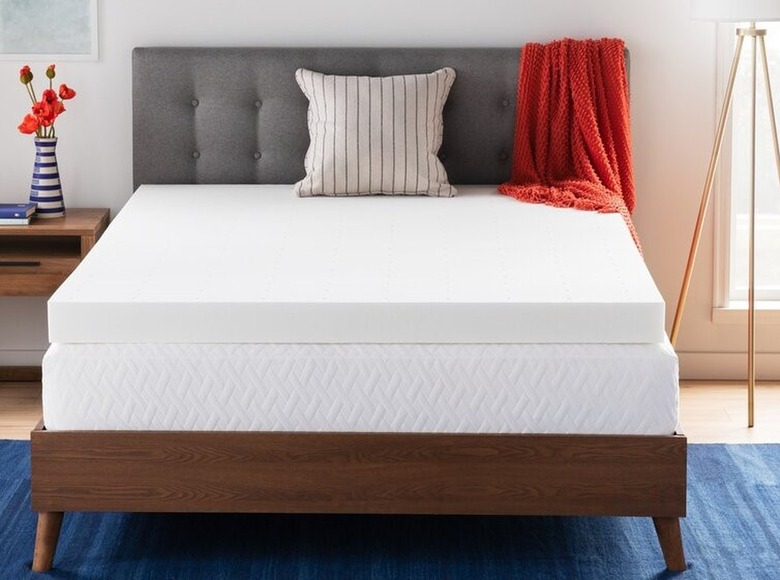How To Remove Stains From A Mattress Cover
We may receive a commission on purchases made from links.
Mattresses are expensive, and preserving their longevity often means covering them to prevent bugs, allergens, smells, and stains from taking over. However, whether you're using a mattress protector to safeguard against unwanted insect infestations or a mattress pad to improve your bed's overall comfort level, stains — particularly yellow stains from sweat and body oil — will surface on mattress pads and protectors over time. While mattress protectors are generally easy to clean, mattress pads can be trickier. Luckily, there are simple cleaning products and practices you can use to keep both smelling fresh and looking stain-free.
Treat Stains on Mattress Protectors and Pads
Treat Stains on Mattress Protectors and Pads
Both mattress protectors and mattress pads can develop yellow stains over time by way of absorbing things, like body oil, sweat, or other contaminants from spills. Mattress protectors are generally machine washable and are therefore much easier to spot treat and clean. Mattress pads, on the other hand, are generally stuffed with material, like wool, feathers, latex, or memory foam, that cannot necessarily go into the washing machine. Whether you're treating stains on mattress protectors or pads, though, each begins with the same stain-targeting methodology.
Always begin any mattress protector or pad cleaning regimen by stripping all the bedding off your bed. Next, take off your mattress protector or pad and place it flat on the floor in an area of your house that receives minimal foot traffic, as it will be lying there for a while. Once it's flat, thoroughly vacuum any dirt and debris off the surface of the mattress protector or pad using a household vacuum hose attachment. A clear surface will be easier to spot clean.
Fill a spray bottle with a mixture of equal parts white vinegar and water. Spray the yellowed area of your mattress protector or pad with the cleaning solution. Make sure to avoid saturating your mattress protector or pad with too much cleaning solution, as this can cause unwanted molding or alter the color of your fabric. To ensure your mattress covering isn't oversaturated, blot away as much of the excess moisture as you can with a clean cloth. Now, this is where the methodologies begin to differ.
Remove Stains on Mattress Protectors
Remove Stains on Mattress Protectors
Once you've treated the yellow stains on your mattress protector with the vinegar solution, blot it with a bit of baking soda. The baking soda soaks up unwanted smells while also lifting staining agents. After it stops bubbling, lightly press in a bit of hydrogen peroxide. Let this sit a few minutes before throwing the protector into the washing machine per its care instructions. Be sure to dry your mattress protector thoroughly, again following the care instructions.
Target Stains on Mattress Pads
Target Stains on Mattress Pads
With the vinegar solution on your mattress pad, generously cover the entire pad with a sprinkling of baking soda. Leave it to do its job for a good eight hours. After that, vacuum up the baking soda. If remnants of the stain remain, repeat the process until the stain has completely disappeared. This method can also be used when treating similar stains on your actual mattress itself.
If the vinegar solution and baking soda are not strong enough to lift the stains, you may want to try alternative mattress stain remover solutions. An enzyme cleaner can be great for lifting biological stains, like body oil, urine, sweat, and blood. A diluted hydrogen peroxide solution can also be good for particularly hard-to-treat stains. Hydrogen peroxide has a tendency to damage memory foam, though, so only use it as a last resort. Additionally, with any cleaning solution, always test it on a small, less-visible section of your mattress pad to ensure it doesn't cause any unwanted discoloration.
Dry Mattress Coverings Thoroughly
Dry Mattress Coverings Thoroughly
No matter how you treat yellow stains on mattress pads or protectors, once those stains lift, fully drying your mattress coverings is key. Storing damp mattress pads or protectors can cause them to develop mold or mildew over time.
